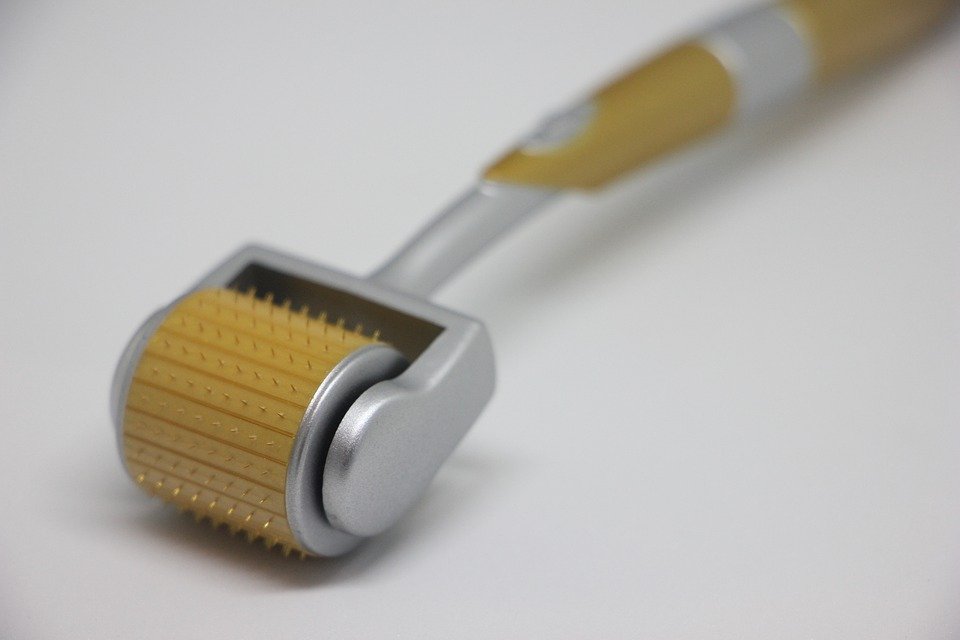Derma rollers come with several different needle lengths. To avoid confusion and making bad decisions when buying for a derma roller, you should consider certain factors such as your skin type and condition.
The epidermis is the outermost layer of our skin. It acts as a main barrier which protects the skin from adverse environmental factors. The thickness of the epidermis can vary – typically, a man’s skin (including the epidermis) is thicker than a woman’s. There are other factors that can also affect the condition of the skin such as the frequent use of cosmetics, eating and drinking habits and exposure to pollution.
If you know what exactly affects your skin, it will be a big help when choosing for the right derma roller needles. Needle length for derma rollers with different needle lengths are made for the microneedle mesotherapy using derma rollers.
All types of needle lengths are used both in beauty salons/dermatology clinics and during home treatments. The following lists the needle lengths and their use on certain skin conditions:
1. Derma roller 0.2 mm
It is usually applied to the thinnest, the most sensitive and the most delicate areas of the face, such as the skin around and under the eyes. This needle length should be used to remove discoloration and very fine wrinkles.Using this needle will also enhance the absorption of skin care products. It is also recommended to use on the scalp to prevent baldness or to stimulate hair growth.
While this needle does not promote or stimulate the growth of collagen, it helps in thickening the epidermis. As a result, the skin will respond more easily and positively to a variety of skin care products.
This needle doesn’t produce any pain, so it’s recommended for daily use. Some people use it even twice a day.
2. Derma roller 0.5-0.75 mm
This is the most popular and the most universal needle length – the “perfect” needle size. It is typically used in mesotherapy treatments.This is the needle length for anyone looking to treat a variety of facial skin conditions such as fine wrinkles, enlarged pores, mild acne scars, old scars, UV damage and hyperpigmentation.
It also enhances the absorption of skin care products. Derma rolling naturally causes the skin to lose much of its moisture, making it dry, so remember to roll carefully with this type of needle.
It can also be used for other parts of the body, especially for treating shallow scars and light stretch marks.
It can be a bit painful, but most people can tolerate that without a topical anesthetic. However, it still depends on a person’s tolerance to pain. If a person has a low threshold to pain, he or she may use a numbing cream like Emla. However, this needle doesn’t cause much bleeding but just a slight redness on the skin, or maybe even tiny droplets of blood. Treatments using this needle should be done every two to three days for five to ten minutes.
3. Derma roller 1-2 mm
Derma rollers with needles measuring 1 mm or longer are ideal for use in cases such as deep scars and severe stretch marks, chicken pox scars, accident scars, cellulite and thick skin. These needles are not usually recommended for facial skin treatments.
It can be really painful during procedure and minor bleeding may occur. Anesthetic creams are absolutely recommended when using these needles, and necessary especially if you have sensitive skin. Treatments should be performed every few days.
Some few more important reminders about derma rollers:
Needles in all types of derma rollers will start to become dull and do not penetrate into the the skin easily. It can be attributed to a couple of factors:
- Frequency of use – The more frequent the treatments, the more often you should replace your current derma roller with a new one. A bent or broken needle is a good indication that you should buy a new derma roller.
- The length of the needle – The longer the needle, the more often (and more necessary) you should replace your current derma roller with a new one.

